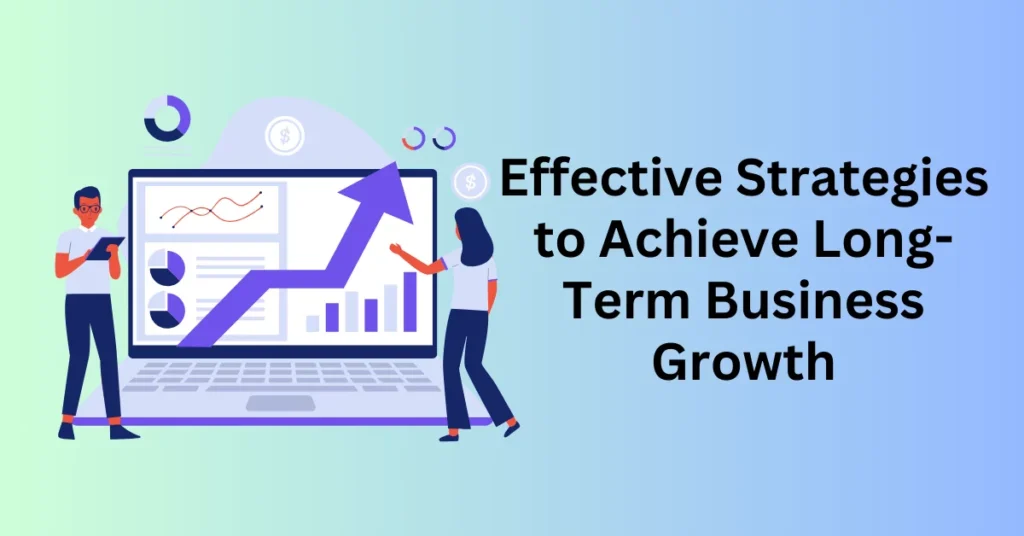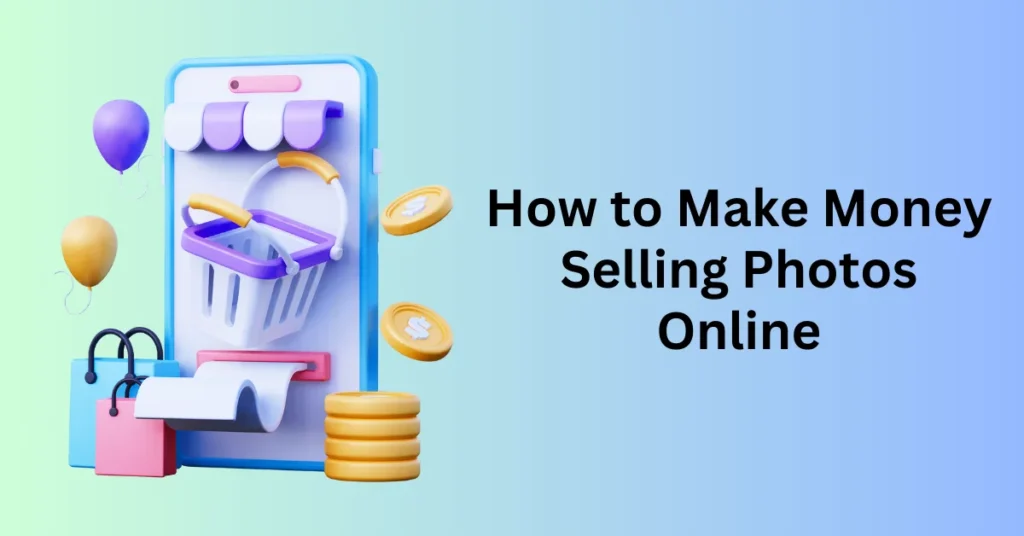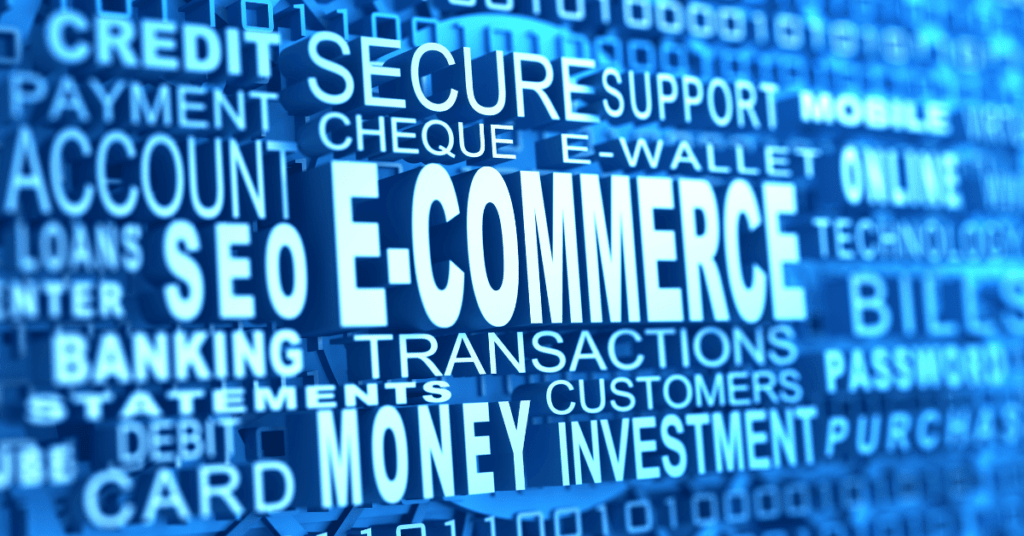Starting and growing a business is no small feat, and the statistics speak for themselves. You would need the right strategies for sustainable business growth. According to research spanning from 1994 to 2020:
- Over 30% of new small businesses in the United States fail within their first two years.
- More than 50% fail within five years.
- Over 65% fail within ten years.
For startups, the numbers are even more daunting. A staggering 90% of startups fail, while only about 1.5% achieve a $50M+ exit.
These sobering statistics highlight a crucial question: How can you build a business that lasts?
The key lies in implementing strategies that promote long-term, sustainable business growth. In this blog post, we’ll share ten effective strategies to help your business not only survive but thrive. Whether you’re a small business owner or an aspiring entrepreneur, these actionable tips will give you a roadmap to future-proof your business and set it on a path to lasting success.
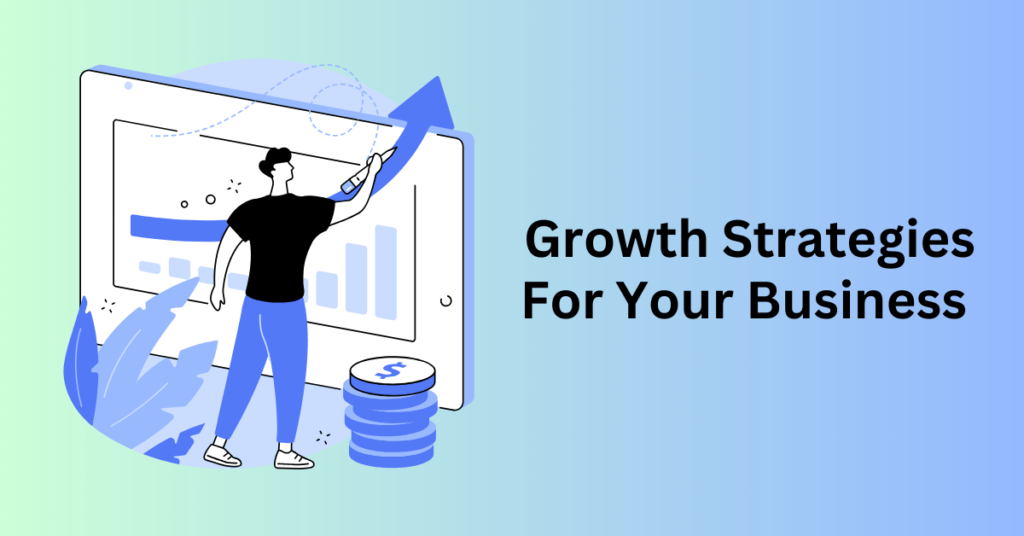
Business growth strategies 1. Create an Exceptional Product or Service
Your core product or service is the cornerstone of your business. It is the very essence of what you offer to the market and the foundation upon which all other aspects of your business rely. Attempting to grow your company with a subpar product or service is like constructing a house on unstable ground—it might hold up temporarily, but it will eventually collapse, undoing all your hard work and investments.
This is why your primary focus should always be on developing a truly outstanding product or service. While this might sound like common sense, in practice, many entrepreneurs rush through this critical step in their eagerness to scale. They focus on marketing, sales, or business growth strategies before ensuring they have a high-quality offering. This approach often leads to dissatisfied customers, negative reviews, and stagnated growth.
Here are some indicators:
Customer Feedback is Positive
When your customers rave about your product or service without being prompted—whether through reviews, testimonials, or word-of-mouth—you can be confident you’re on the right track. Their enthusiasm often translates into organic referrals and repeat business.:
Low Customer Churn
If you offer a subscription-based service or sell products that encourage repeat purchases, a low churn rate is a sign that customers find immense value in what you offer. If your product or service solves a clear problem in a way that competitors don’t, or if it addresses an underserved niche, this indicates strong market potential.
Customer Willingness to Pay a Premium
A great product or service often commands a higher price point because customers see its value. If your customers are willing to pay more for what you offer compared to competitors, it’s a sign you’ve hit the mark.
On the flip side, if you’re struggling to garner positive feedback, experience high churn rates, or face indifference in the market, it might be time to take a step back and reevaluate. Consider collecting detailed feedback, conducting market research, or iterating on your product or service based on customer pain points.
Business growth strategies 2. Transform Your Product or Service Into an Irresistible Offer
Having an amazing product or service is just the first step. To drive sales and outshine competitors, you need to package what you’re offering into something customers simply can’t refuse. But how can you craft an offer that feels truly irresistible?
The secret lies in this simple formula:
Low Price + High Value – Financial Risk = Irresistible OfferBy combining affordability, exceptional value, and a sense of security, you create an offer that appeals directly to your audience’s desires while minimizing their hesitations. Let’s break it down further:
Reduce the Price Without Undermining the Perceived Quality
Pricing plays a critical role in how your offer is perceived by potential customers. While it may be tempting to undercut competitors in an effort to attract more buyers, it’s important to approach pricing with caution. Setting a price that is too low can raise red flags, leading customers to question the quality of your product or service.
Instead, aim for a price that is competitive but still positions your offer as valuable. For example, if your competitors charge $50, pricing your offer at $45 while highlighting additional benefits—such as offering free resources—can create a sweet spot. This approach balances affordability with perceived value, making your product or service more attractive to customers without compromising on quality.
Increase the Value Through Bonuses
Adding value doesn’t mean inflating costs. You can significantly enhance the appeal of your offer by including bonuses that are inexpensive to you but highly beneficial to your customers.
- Examples of High-Value, Low-Cost Bonuses:
- Digital resources like cheat sheets, templates, or checklists.
- Access to an exclusive video tutorial or mini-course.
- A free trial or consultation session.
- Membership in a private community or forum.
- Digital products, in particular, are excellent add-ons because they cost little to produce after the initial creation but add a lot of perceived value.
Remove Financial Risk
One of the biggest barriers to purchase is fear—fear of wasting money, time, or effort. This hesitation can prevent potential customers from taking the next step, but you can eliminate this concern by offering a risk-free buying experience.
There are several options to reduce the perceived risk for customers. A 30-day, no-questions-asked money-back guarantee is a great way to show confidence in your product and reassure buyers that they won’t regret their purchase. This guarantee creates a safety net for customers, making them more likely to commit. Another effective option, especially for services, is a results-based pricing structure. In this model, customers pay based on tangible outcomes or milestones, which further diminishes the risk and makes the purchasing decision feel more secure.
While each of these tactics can improve your offer, the magic happens when you implement all three together. For instance, imagine offering a product priced slightly below competitors, bundled with a suite of valuable bonuses, and backed by a robust satisfaction guarantee. This comprehensive approach makes it nearly impossible for your audience to say no.
Let’s say you’re selling an online course for $99. To make it irresistible:
- Low Price: Price it competitively, such as $89, while emphasizing the quality of the content.
- High Value: Include bonuses like a downloadable workbook, access to a private student group, and a free 30-minute coaching call.
- No Financial Risk: Offer a 30-day money-back guarantee, ensuring customers feel safe in their decision.
When you combine these strategies, your offer won’t just stand out—it will be the obvious choice. By focusing on how your customers perceive affordability, value, and security, you’ll create a proposition that attracts buyers and builds trust, setting the stage for sustainable strategies for business growth.
Business growth strategies 3. Leverage Cold Outreach to Land Your First Customers
When you’re just starting out and looking for your first customers, nothing beats the directness and immediacy of cold outreach. Whether you’re offering a product, service, or solution, cold outreach allows you to connect with potential customers quickly and affordably.
Cold outreach refers to contacting people who have not interacted with your business before. It’s a proactive strategy that can include:
- Cold Calling: Directly reaching out to potential customers via phone.
- Cold Emailing: Sending tailored emails to individuals or businesses.
- Cold DMs (Direct Messages): Connecting with people on social media platforms like LinkedIn, Instagram, or Twitter.
This strategy requires little to no upfront financial investment, making it an ideal option for startups or solopreneurs with limited budgets.
Cold outreach is fundamentally a numbers game. Not everyone you contact will respond positively, but persistence pays off. If you reach out to 100 people every day—whether by phone, email, or DMs—you’ll gradually start seeing results.
However, consistency is crucial. Sporadic efforts rarely yield significant results, so it’s essential to treat cold outreach as a daily habit rather than a one-off activity.
The Rule of 100: A Game-Changer for Cold Outreach
Alex Hormozi, a well-known entrepreneur, champions a principle called the “Rule of 100,” which can be transformative for those just starting out:
- Commit to 100 primary actions per day (in this case, cold reachouts) for 100 days straight.
- These actions could include cold calls, emails, or DMs.
This adds up to 10,000 reachouts in 100 days, and it can take roughly 4 hours per day. By following this rule, you’ll generate enough volume to build momentum, refine your messaging, and start converting leads into paying customers.
Cold outreach isn’t just about contacting as many people as possible—it’s about doing so effectively. Here’s how to maximize your efforts:
Craft a Compelling Opening Message
Your initial message should be designed to capture attention and communicate your value proposition in a clear, engaging way. It’s important to avoid sounding generic or overly sales-driven. Instead, personalize your outreach to make it feel relevant to the recipient and their needs.
For example, in a cold email, you might structure it as follows:
Subject: “Quick Question About [Their Business/Role]”
Body:
“Hi [Name],
I noticed [specific detail about their business]. I help companies like yours [specific benefit]. Would you be open to a quick call to discuss how we could work together?”
This approach keeps the message concise, personalized, and focused on the value you offer, making it more likely to resonate with the recipient.
Follow Up Persistently
Most people won’t respond to your first message, but persistence is key. Continue following up until you receive a clear “yes” or “no.” Spaced-out follow-ups (e.g., every 2–3 days) keep you top of mind without being intrusive.
Use Tools to Streamline the Process
While cold outreach requires effort, tools like CRM software, email automation platforms, or social media scheduling apps can help you stay organized and efficient.
Track Your Metrics and Iterate for Your Business Growth
Keep track of your response rates, conversion rates, and feedback. Use this data to refine your messaging, adjust your targeting, or improve your follow-up strategy.
Why Cold Outreach Works for Beginners
- Immediate Feedback: You’ll quickly learn what resonates with your target audience and what doesn’t.
- Low Cost: Cold outreach requires time but minimal financial investment.
- Builds Confidence: Speaking directly to potential customers strengthens your understanding of their pain points and how to address them.
By committing to consistent, focused cold outreach, you’ll not only generate your first customers but also lay the groundwork for long-term business growth strategies. Remember: persistence, personalization, and follow-up are your greatest allies in this strategy.
Business growth strategies 4. Gather and Leverage Social Proof to Boost Your Credibility
Social proof is a powerful tool for building trust and increasing conversion rates. Once you’ve made some sales, your next step should be to collect customer feedback. Showcase this feedback through testimonials and case studies. People trust the experiences of others. When potential customers see real results, it reduces hesitation. It also builds confidence in their decision to buy from you.
Social proof can come in many forms. This includes glowing testimonials, detailed case studies, or simple reviews. Each one reassures prospects that your product or service delivers as promised.
Proactively Request Testimonials
Happy customers are often more than willing to share their experiences if you ask them. Reaching out to satisfied customers and requesting feedback on how your product or service has helped them can provide valuable social proof and build trust with potential buyers.
To ensure you receive a great testimonial, there are a few key elements to keep in mind. First, include the customer’s photo and full name to make the testimonial more authentic and relatable. Visuals add credibility and help potential customers connect with the testimonial on a personal level.
Next, ask customers to highlight specific, measurable outcomes they’ve achieved using your product or service. For example, “I increased my sales by 30% within three months using [your product].” Specific results like these make the testimonial more compelling and relatable.
Finally, including credibility enhancers, such as the customer’s job title, company name, or location, can add valuable context and authority to the testimonial. These details make the feedback feel more genuine and reinforce the trustworthiness of the statement.
Create Detailed Case Studies
When a customer shares a particularly impressive success story, consider asking if they’d be open to becoming a case study. Unlike testimonials, case studies provide a detailed, step-by-step account of how your product or service helped a customer achieve their goals, offering deeper insight and a more compelling narrative for potential buyers.
A well-crafted case study should include the following key elements:
Background: Start by briefly introducing the customer, their business, and the challenges they were facing. This sets the stage for understanding the context of their needs.
Solution: Explain how your product or service was implemented to address those challenges. This should include details on the process and any unique features of your offering that made a difference.
Results: Highlight specific, measurable outcomes. Use statistics or visuals to reinforce the impact your product or service had on the customer’s success. For example, “Sales increased by 40% within two months” or “Customer satisfaction improved by 25%.”
Quote: Include direct quotes from the customer to make the story more personal and engaging. This adds authenticity and helps readers connect with the experience in a more relatable way.
By showcasing a customer’s journey in this way, a case study can effectively illustrate the value your product or service provides while building trust and credibility.
Leverage Social Proof
You don’t need a large collection of testimonials or case studies to start seeing results. As soon as you receive your first solid testimonial, put it to work immediately to build trust and credibility with potential customers.
There are several strategic places to feature testimonials:
Website: Display them prominently on your homepage, landing pages, or product pages. This provides instant social proof and reassures visitors that others have had positive experiences with your product or service.
Social Media: Share testimonials across your social media channels as posts, stories, or ads. This allows you to showcase real customer success and engage with your audience on multiple platforms.
Email Campaigns: Incorporate testimonials into your email marketing efforts. Adding a testimonial to your outreach emails can increase credibility and boost conversions by providing social proof directly to your recipients.
Sales Funnels: Use testimonials at every stage of your sales funnel. From opt-in pages to checkout pages, strategically placed social proof can reassure prospects, making them more likely to move forward in the buying process.
By incorporating testimonials across these touchpoints, you can enhance your marketing efforts and create a stronger connection with potential customers.
Even if your early testimonials aren’t dramatic or life-changing, they still have value. Use whatever positive feedback you receive to build momentum. Over time, as you accumulate more impressive testimonials and case studies, you can strategically rotate and highlight the best ones.
Pro Tip: Make It Easy for Customers to Share Feedback
The easier it is for your customers to provide testimonials, the more likely they’ll do it. Consider creating a simple process for collecting feedback, such as:
- Sending a follow-up email with a link to a feedback form.
- Offering a small incentive, like a discount or freebie, for completing a testimonial.
- Using video testimonial tools like VideoAsk to gather authentic, engaging video feedback.
Social proof is an ongoing asset that grows stronger over time. It not only increases conversions but also helps position your brand as credible and trustworthy in your niche. Start with the feedback you have now and continuously build your collection of testimonials and case studies. Every positive word about your business is another step toward convincing your next customer to say, “Yes!”
Business growth strategies 5. Building Traffic-Generating Assets
Once you’ve established a reliable stream of revenue through cold outreach, it’s time to think long-term. Shift some of your focus to building sustainable traffic sources. This means creating digital assets that drive ongoing traffic to your business. These assets can include social media profiles, email newsletters, and video content channels. Over time, they will help you attract and engage your audience consistently.
Cold outreach is effective, but it’s also time-consuming and not easily scalable. By investing in digital assets, you create a foundation for organic traffic that grows over time, reduces your reliance on manual efforts, and generates leads on autopilot.
Start with Social Media Marketing
Social media platforms are powerful tools for building your brand, engaging with your audience, and attracting potential customers. To maximize your efforts, it’s important to focus on one or two platforms that align with your target audience’s preferences and where you can create the most impact.
Here are some tips for building a social media following:
- Post consistently: Use a content calendar to stay organized and ensure you’re posting regularly to maintain engagement with your audience.
- Share valuable content: Post content that’s not only engaging but also valuable to your audience. This can include tips, tutorials, or relevant insights. Make sure your posts are visually appealing to catch the eye of potential followers.
- Engage with your audience: Respond to comments and direct messages (DMs) to build stronger relationships with your community and show that you value their input.
- Use trends: Leverage popular features like reels, stories, or challenges to boost visibility and attract a larger audience. These formats often get higher engagement and can help you stay relevant.
- Collaborate: Partner with influencers or other accounts in your niche to reach new audiences and grow your following faster.
- Track performance: Monitor your performance metrics (likes, shares, comments, etc.) to understand what resonates best with your audience, so you can refine your strategy over time.
Once you have a loyal social media following, you can funnel those followers to other platforms, like your email list or video channels, to continue building relationships and nurturing potential customers.
Grow an Email Newsletter
Email marketing is one of the most effective ways to nurture leads and build strong relationships with your audience. Unlike social media, where you’re subject to algorithm changes, with email marketing, you own your list, giving you direct access to your subscribers and greater control over your messaging.
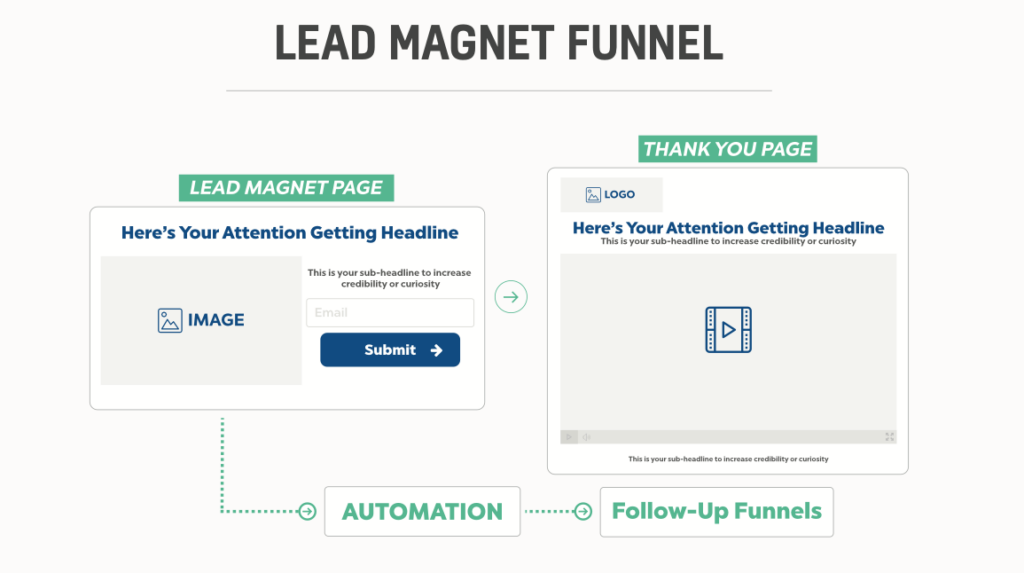
Here are some strategies for building your email list:
- Offer a lead magnet: Provide something of value, such as a free eBook, checklist, or mini-course, in exchange for an email address. This incentivizes visitors to sign up and positions you as an expert in your field.
- Promote your signup link: Share your email signup link on your social media platforms and website to ensure you’re reaching potential subscribers across multiple channels.
- Offer exclusive content or discounts: Encourage signups by offering subscribers access to exclusive content, special offers, or discounts that aren’t available to non-subscribers. This adds extra value to joining your email list.
Once your email list starts growing, you can use it to drive traffic to your website, social media profiles, or video content, helping you further engage with your audience and generate more opportunities for conversions.
Expand into Video Marketing
Video marketing on platforms like YouTube and TikTok is a powerful way to amplify your reach and connect with your audience on a deeper level. To start, focus on one platform and grow your presence as your confidence and resources expand.
On YouTube, aim to create valuable, evergreen content that educates, entertains, or inspires your audience. Optimizing your videos with relevant keywords will help improve their discoverability. To drive traffic, promote your videos through email and social media channels.
For TikTok, concentrate on posting short, engaging videos that tap into current trends or challenges. Share your expertise or offer behind-the-scenes content to foster a genuine connection with your audience. To make the most of TikTok’s algorithm, it’s crucial to post consistently and use trending hashtags to increase visibility.
Allocate Time Wisely
Building these traffic-generating assets takes time and requires consistent effort. Start by dedicating 2–4 hours per week to creating and sharing content on one platform. As your processes improve and your confidence grows, you can gradually increase your efforts and expand into additional channels.
The benefits of traffic-generating assets are significant. First, they are cost-effective; once established, these channels provide free, organic traffic. They are also scalable— as your audience grows, so does your ability to attract leads and sales without a proportional increase in workload. Additionally, these assets offer evergreen value; for example, YouTube videos or email newsletters continue to generate traffic and engagement long after they’ve been created, providing long-term benefits.
Success with traffic-generating assets requires patience and persistence, but the rewards are immense. By steadily growing your social media following, email list, and video content, you’ll create a diversified ecosystem that drives traffic, builds trust, and fuels the growth of your business for years to come. Stick with it, and you’ll turn these efforts into one of your most valuable business investments!
Business growth strategies 6. Build a Value Ladder Sales Funnel to Maximize Revenue
A sales funnel is a proven system that guides potential customers through the buyer’s journey, turning casual visitors into loyal, repeat customers. Among the many funnel strategies, a Value Ladder sales funnel stands out as one of the most effective ways to sell products or services online.
This approach doesn’t just aim to make a one-time sale—it builds trust and nurtures long-term relationships with customers while steadily increasing the value (and cost) of the offers they receive.
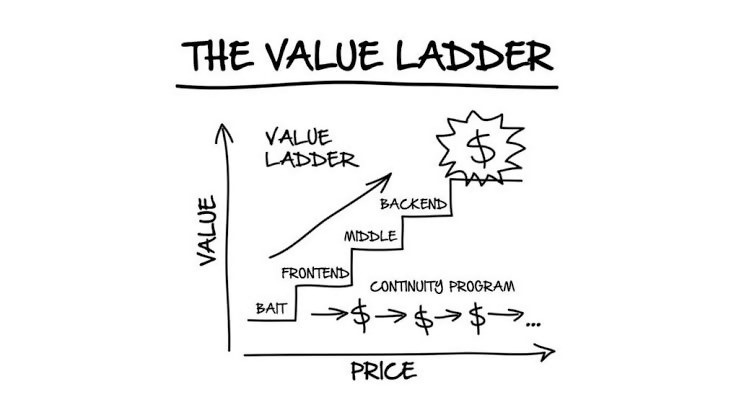
A Value Ladder sales funnel is structured to gradually offer increasing value to customers while encouraging them to ascend the ladder by purchasing higher-priced products or services. Each step provides more benefits to the customer and generates more revenue for your business.
Lead Magnet (Freebie): The First Step
Start by offering a free lead magnet in exchange for the customer’s email address. The goal of this initial offer is to build trust and introduce potential customers to the value you provide without requiring them to make a financial commitment. Examples of effective lead magnets include eBooks or whitepapers, cheat sheets or templates, free trials or samples, and webinars or video series. This free offering sets the foundation for future interactions and helps you start building your email list.
Low-Ticket Offer: Building Trust
Once you have captured the customer’s email, pitch a low-cost product or service that solves a small problem or enhances the freebie they’ve already received. A low-ticket offer helps to build trust by delivering more value at a minimal cost. Examples of low-ticket offers include a $10–$50 digital product like an advanced guide or course, a discounted entry-level physical product, or a one-time consultation or workshop. These offers ease customers into making a purchase while still keeping the price affordable.
Core Offer: The Main Sale
After you’ve delivered value through the lead magnet and low-ticket offers, it’s time to introduce your core product or service, which is where the bulk of your revenue typically comes from. This is your flagship offering, designed to meet the primary needs of your target audience. Examples of core offers include a premium course or coaching program, a full-priced physical product bundle, or a subscription to a software tool or membership program. This stage represents the main selling point of your business.
High-Ticket Offer: Premium Experience
For customers who are fully engaged and trust your brand, offer an exclusive, high-value solution at a premium price. This high-ticket offer caters to your most loyal customers and provides an elevated experience. Examples include one-on-one coaching or consulting, enterprise-level services or products, or exclusive VIP experiences or retreats. This offer allows you to generate significant revenue from your most dedicated customers, providing them with a premium solution.
Continuity Program: Recurring Revenue
To ensure long-term profitability, set up a continuity program that generates recurring revenue. This program provides customers with ongoing value through subscriptions or memberships, ensuring a steady stream of income for your business. Examples of continuity offers include monthly or annual memberships (for access to exclusive content, a community, or software), subscription boxes for physical products, or retainer-based services. These offers encourage customer loyalty and provide predictable, recurring revenue.
Why a Value Ladder Funnel Works for Business Growth
Starting with a free or low-cost offer helps to build trust gradually by lowering the barrier to entry. This approach makes it easier for potential customers to engage with your brand without feeling overwhelmed by high costs. As they experience the value of your offerings, they become more comfortable with your brand, creating a solid foundation for future purchases.
This strategy also increases Lifetime Value (LTV), as customers are more likely to purchase higher-priced offers once they’ve experienced the value of your lower-tier products. As they trust your brand and see the benefits, they are more inclined to invest in your core or premium products, resulting in greater revenue per customer.
Additionally, combining low-ticket, high-ticket, and recurring offers helps diversify your revenue streams. This creates multiple income channels, stabilizing your cash flow by reaching different customer segments and providing a mix of immediate and long-term earnings. The diversity in your offerings can protect your business from fluctuations in any one area.
One of the strengths of this approach is its versatility—it works for virtually any business model. Whether you sell services, physical products, digital goods, software, or memberships, this funnel can be tailored to suit your offerings. The structure is adaptable, allowing businesses in various industries to implement a similar strategy for sustained growth.
How to Set Up a Value Ladder Funnel for Business Growth
To effectively implement your sales funnel, start by designing each step of the ladder. Clearly define your lead magnet, low-ticket, core, and high-ticket offers, as well as any recurring programs. Each offer should be strategically placed to guide potential customers through a seamless journey, building trust and value at each stage.
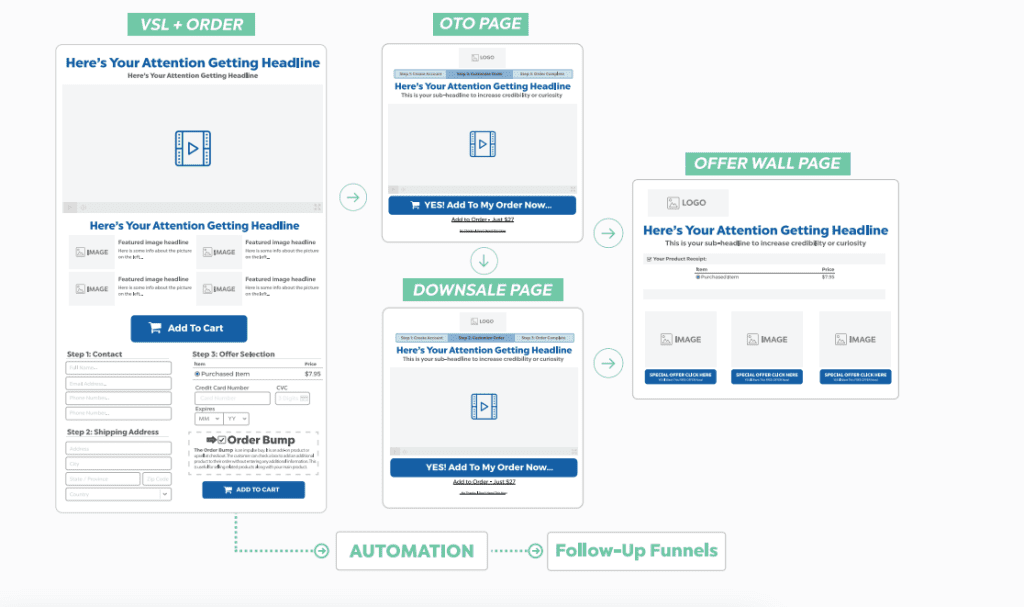
Next, build an automated email sequence to nurture leads. Use email marketing to deliver valuable content and guide prospects through each step of the ladder. This automation helps build relationships with your audience, keeping them engaged and ready to move to the next offer when the time is right.
Once your funnel is set up, it’s time to drive traffic. Utilize a mix of strategies, such as social media, paid ads, and SEO, to attract potential customers into your funnel. These channels can help you reach a broader audience and bring in qualified leads that are likely to convert into paying customers.
Finally, test and optimize your funnel regularly. Monitor its performance closely, looking at conversion rates, engagement levels, and customer feedback. Use this data to adjust pricing, offers, or messaging to improve results. Continuous testing and refinement ensure that your funnel is always performing at its best, driving consistent growth for your business.
The Value Ladder sales funnel doesn’t just help you sell more; it creates a roadmap for customer relationships, ensuring that each interaction builds trust and delivers value. Whether you’re selling a $10 eBook or a $10,000 coaching package, this funnel is a scalable, repeatable system for increasing revenue and driving sustainable business growth.
Start building your Value Ladder today, and watch how it transforms your business into a powerhouse of trust, value, and profit!
Business growth strategies 7. Maximize Customer Lifetime Value (CLV) with Downsells, Upsells, and Cross-Sells
One of the most effective ways to maximize the Customer Lifetime Value (CLV) of your business is by strategically adding downsells, upsells, and cross-sells to your sales funnel. These additional offers encourage customers to spend more or stay engaged longer, helping you make the most out of every interaction.
By designing these offers around the Bait, Frontend, Middle, and Backend structure, you can significantly increase profitability and gain a competitive edge in your market.
Downsells: Recovering Lost Opportunities
A downsell is an alternative offer presented after a potential customer declines your main offer. It’s typically a “lower-tier” version of your original product or service, designed to appeal to those who found the main offer too expensive or overwhelming. For example, if your initial offer is a $100 comprehensive online course, a downsell might be a $30 eBook covering similar material but in less detail. Downsells work because customers who showed interest but didn’t purchase are still likely to buy if given an option that’s more affordable or simpler. This strategy capitalizes on warm leads, providing a chance to recover otherwise lost revenue.
Upsells: Encouraging Bigger Purchases
An upsell is an upgraded or premium version of your product pitched after a customer accepts the initial offer. It’s designed to enhance the customer’s experience or provide additional value. For instance, if your initial offer is a $50 digital planner, the upsell might be a $100 yearly subscription that provides access to exclusive planning tools and content. Upsells work, because customers who have already committed to making a purchase are more open to spending more, especially when the upsell, complements their initial purchase and aligns with their needs.
Cross-Sells: Complementary Offers
A cross-sell involves suggesting related products or services that complement the customer’s purchase. Unlike an upsell, a cross-sell doesn’t replace or upgrade the initial offer but adds extra value by offering something that enhances the purchase. For example, if your main offer is a $20 pair of headphones, a cross-sell could be a $10 protective case or a $15 Bluetooth transmitter. Cross-sells work because they enhance the customer’s purchase, making their experience more complete or enjoyable while encouraging additional sales without the pressure of upgrading the original offer.
When to Present These Offers in Your Sales Funnel for Business Growth
The best time to pitch an upsell or cross-sell is immediately after a customer has decided to make a purchase. At this point, customers are in a buying mindset, making them more receptive to additional offers that enhance their experience. For digital products, a simple one-click upsell on the checkout page can be incredibly effective, allowing customers to easily upgrade or add complementary items without interrupting their purchasing flow. This strategy takes advantage of the customer’s momentum and willingness to invest further.
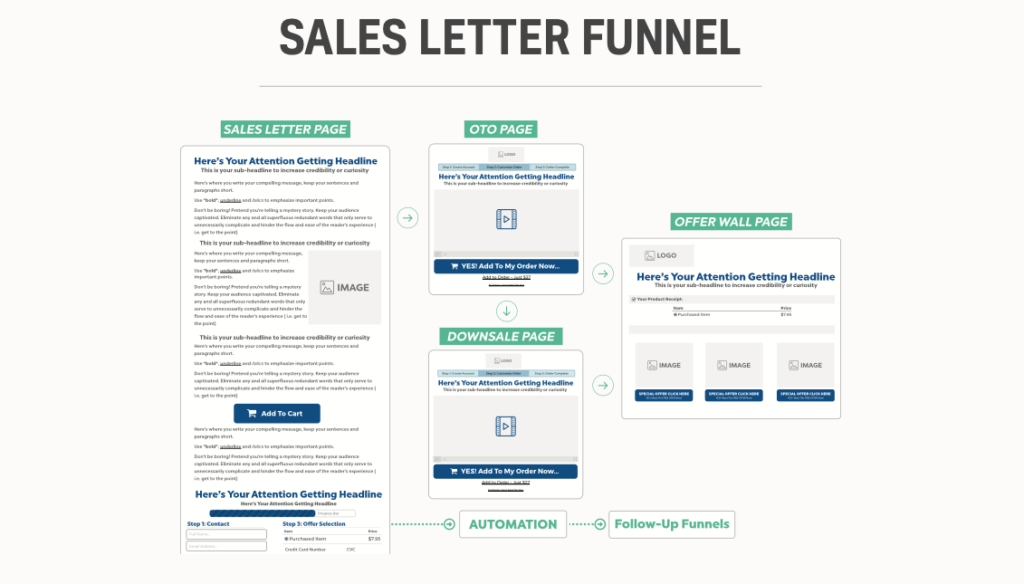
A downsell works best when presented to customers who have reached your sales page or cart but didn’t complete the purchase. These customers have already shown interest in your offer, so presenting a downsell gives them a chance to buy something at a lower price point that still meets their needs. Use a pop-up or follow-up email sequence to present the downsell, which can encourage customers to reconsider and make a purchase. This strategy helps salvage the sale and ensures you don’t lose a potential customer entirely.
Examples of Effective Offer Combinations
- McDonald’s Model:
- Upsell: “Would you like to supersize that?” (Higher value, larger portion).
- Cross-Sell: “Would you like fries with that?” (Complementary item).
- Software as a Service (SaaS):
- Main Offer: Monthly software subscription for $30.
- Upsell: Annual subscription for $300 (20% savings).
- Cross-Sell: Training course on maximizing software usage for $50.
- Downsell: Limited-feature version for $10/month.
- E-commerce Example:
- Main Offer: $100 premium skincare set.
- Upsell: $50 anti-aging serum to complement the set.
- Cross-Sell: $20 travel-sized version of the skincare products.
- Downsell: $50 basic skincare set without premium items.
The Benefits of Maximizing CLV for Business Growth
By incorporating upsells, cross-sells, and downsells into your sales process, you can significantly increase the amount each customer spends. This boosts your profitability by maximizing the value of each transaction, ensuring that customers are more likely to make larger purchases or add-ons, ultimately driving higher revenue per customer.
Strategic upsells and cross-sells not only increase immediate sales but can also improve customer retention. By offering additional products or services that complement their initial purchase, you provide more value to customers, which strengthens their loyalty to your brand. This enhanced experience makes customers more likely to return for future purchases, fostering long-term relationships.
Maximizing Customer Lifetime Value (CLV) allows you to afford higher Customer Acquisition Costs (CAC) while maintaining profitability. By generating more revenue from existing customers, you can offset the cost of acquiring new ones. This gives you a competitive advantage, as you can invest more in marketing and customer acquisition strategies without compromising your margins.
With increased revenue per customer, you gain more flexibility in your pricing strategy. You can offer more competitive pricing on entry-level products or services to attract new customers, knowing that you can offset the lower margins through upsells, cross-sells, and recurring revenue. This approach helps you stand out in the market while maintaining profitability.
Business growth strategies 8. Run Paid Ads and Drive Traffic to Your Value Ladder Sales Funnel
Running paid ads can significantly accelerate your business growth by driving targeted traffic to your Value Ladder Sales Funnel. However, this strategy is most effective once your business has achieved consistent profitability. At this stage, reinvesting those profits into paid advertising allows you to scale your operations without jeopardizing your financial stability.
Paid advertising offers several key advantages. It enables you to reach your target audience instantly, placing your offer directly in front of the right people. Unlike organic methods, which take time to yield results, ads deliver immediate visibility. Additionally, paid ads provide valuable data, allowing you to test and refine your marketing strategies to better resonate with your audience. Finally, when executed properly, paid advertising can help you scale traffic effectively, bringing in a predictable and steady stream of leads and customers, which in turn supports sustainable growth.
Step-by-Step Guide to Getting Started with Paid Ads
Choose the Right Advertising Platform
The advertising platform you select should align with your business model and target audience. There are several popular options to consider, each catering to different types of businesses. For instance, Facebook and Instagram ads are ideal for a wide range of businesses, particularly e-commerce, personal services, and digital products.
Google Ads, which includes both Search and Display networks, works best for businesses aiming to target individuals actively searching for solutions. TikTok Ads are especially effective for brands targeting a younger audience, leveraging engaging video content. LinkedIn Ads, on the other hand, are perfect for B2B businesses and professional services. If you’re uncertain where to start, Facebook Ads offer versatility and work well across many industries.
Educate Yourself on Paid Advertising
Before jumping into paid ads, it’s essential to invest time in learning the fundamentals. Numerous resources are available to help you get started. Udemy offers affordable courses that are beginner-friendly, with step-by-step guides tailored to various platforms. You can often find discounts during sales.
YouTube tutorials provide a free option for learning, but make sure to choose up-to-date content to avoid outdated information. Additionally, many ad platforms like Facebook and Google provide free training modules that can help you understand how their systems work. Be sure to thoroughly complete these courses or guides before launching your first ad campaign to ensure you’re well-prepared.
Start Small with a Test Budget
Once you have a solid understanding of paid ads, it’s time to test with small campaigns to gain hands-on experience. Begin by setting a daily budget of $5–$10. This amount is manageable and allows you to learn without significant financial risk.
Start by promoting a lead magnet, such as a free eBook, webinar, or checklist, to help build your email list. Use the platform’s targeting tools to define your ideal audience based on demographics, interests, and behaviours. The goal at this stage is to gain confidence and become familiar with how the ad platforms operate, not necessarily to achieve immediate large-scale results.
Optimize Your Ad Campaign
As you run test campaigns, keep an eye on key metrics that will help you assess the effectiveness of your ads. The Click-Through Rate (CTR) measures how engaging your ad is, while the Cost Per Lead (CPL) tells you how cost-effective your campaign is at generating leads.
The Conversion Rate tracks how well your landing page turns visitors into leads or customers. Use these insights to make adjustments to your ad copy, visuals, or audience targeting to improve performance. Continuous optimization will help you maximize the results of your campaigns.
Scale Your Campaign Gradually
Once your lead magnet campaign is consistently profitable, it’s time to scale. Begin by reinvesting some of your ad profits to increase your daily budget slowly. Gradually expanding your audience is also important—test new targeting options or create lookalike audiences based on your most engaged leads. To further scale, diversify your campaigns by promoting additional steps in your Value Ladder, such as upsells, cross-sells, or core offers. Scaling should be a gradual process, allowing you to maintain control while expanding your reach.
Running paid ads is a powerful way to accelerate your business growth, but it requires a balance of knowledge, testing, and careful budget management. Start small, optimize continuously, and scale gradually to ensure long-term success.
By driving paid traffic to your Value Ladder Sales Funnel, you can attract high-quality leads, convert them into customers, and ultimately maximize your business’s profitability. With patience and persistence, paid advertising can become a cornerstone of your growth strategy.
Business growth strategies 9. Prioritize Customer Retention
Entrepreneurs often focus on acquiring new customers because it feels exciting and growth-oriented. However, neglecting customer retention can leave your business in a “leaky bucket” situation—no matter how many new customers you acquire, your growth stagnates because you’re constantly losing the ones you already have.
Shifting your focus to retaining customers not only helps you build long-term loyalty but also significantly reduces your cost per customer. Studies show that retaining a customer is far more cost-effective than acquiring a new one. Here’s how you can prioritize customer retention effectively:
Proactively Solicit Customer Feedback for Business Growth
Feedback is a valuable tool for understanding your customers’ experiences and meeting their needs. To gain a comprehensive view, engage with different customer groups. Speak to happy customers to learn what’s working well and what should be emphasized. Connect with neutral customers to identify potential improvements that might have been overlooked. Most importantly, listen to unhappy customers to uncover pain points where your product, service, or support might be lacking. Actively seeking feedback demonstrates that you value your customers’ opinions, fostering trust and loyalty in the process.
Prioritize What’s Important to Your Customers for Business Growth
Your customers are the best source of guidance when shaping your product or service. Pay close attention to recurring feedback, especially when customers repeatedly request specific features or services. If multiple customers ask for a particular addition, prioritize implementing it—even if it wasn’t part of your initial plan. At the same time, resist the temptation to pursue vanity upgrades that may seem impressive but don’t truly align with customer needs. By focusing on what your customers want, you not only retain your current customer base but also make your product more appealing to potential new customers.
Provide Exceptional Customer Support for Business Growth
Exceptional customer support is often the deciding factor in whether a customer continues with you or chooses a competitor. Ensure that your support is easily accessible by providing clear instructions on how customers can reach your team through various channels, such as email, live chat, or a helpdesk system. Set clear expectations regarding response times and strive to meet those timelines consistently. Respond promptly and empathetically, showing a genuine willingness to assist. Going the extra mile to resolve concerns can turn frustrated customers into loyal advocates, making them more likely to stick with your brand.
Reward Loyal Customers for Business Growth
Creating incentives for repeat customers can foster loyalty and increase retention. Offer exclusive discounts or special pricing for long-term customers as a token of appreciation. Implement loyalty programs where customers can earn rewards for their purchases, such as points that can be redeemed for discounts or gifts. Providing VIP perks, such as early access to new products or exclusive content, also helps make customers feel valued. These strategies strengthen relationships with your existing customers and enhance the likelihood of repeat business.
Build Relationships Beyond Transactions for Business Growth
To truly retain customers, focus on building relationships beyond just the sale of a product or service. Personalize interactions by using customer data to offer tailored recommendations, birthday discounts, or thoughtful “thank you” notes. Stay engaged with customers by regularly communicating through email newsletters, social media, or community events. Providing ongoing value through free resources, tutorials, or tips that complement your product can enhance the overall customer experience and build long-term loyalty.
Building authentic relationships fosters trust and keeps your brand top of your mind.
Business growth strategies 10. Scale Strategically
Scaling your business too early can be detrimental. It’s essential to approach scaling with careful consideration to ensure sustainable business growth. So, how do you determine if your business is truly ready for scaling?
Wait for Steady Organic Business Growth
The first sign that your business is ready to scale is when you start seeing consistent sales growth that cannot be attributed solely to increased marketing spend. This is a key indicator of product-market fit and positive customer sentiment.
For example, if you’ve been consistently spending $1,000 per month on marketing for the last six months, and your sales are steadily increasing without a proportional increase in ad spend, that’s a positive signal. This pattern often means your customers are referring your product or service to others—an invaluable form of organic business growth.
On the other hand, if you notice that your marketing spend is rising but your sales are stagnating or even declining, it could signal that customers are dissatisfied and sharing negative feedback. If you scale in this situation, you risk amplifying the problem and damaging your brand reputation. Therefore, don’t rush to scale when the signs of negative word-of-mouth are evident.
Streamline Your Workflow for Business Growth
Before scaling, focus on optimizing your internal operations. Streamlining workflows will save you both time and money, making it easier to handle increased demand. Start by automating as many processes as possible, from customer communication to inventory management, to free up resources and minimize errors.
Additionally, develop Standard Operating Procedures (SOPs) for every aspect of your business, whether it’s handling customer inquiries, processing orders, or quality control. Having well-documented SOPs allows your team to execute tasks more efficiently and ensures consistency across all aspects of the business.
Use Historical Data for Projections
To scale effectively, base your decisions on data, not guesswork. Leverage historical data to create sales projections and model various scenarios for your business. Consider factors like seasonal trends, market demand, and past performance when making projections.
A solid understanding of your business’s historical performance will help you develop realistic goals and avoid overestimating potential growth. For a more detailed guide, consider reading up on sales forecasting methods to gain deeper insights into how to plan for scaling.
Set Realistic Sales Targets and Create a Plan for Business Growth
Once you have a good understanding of your business’s capacity, set achievable sales targets. These targets should be based on your past performance and your data-driven projections. Break down your goals into actionable steps and outline a clear plan to achieve them. This plan should include specific strategies for scaling—whether it’s through increased marketing spend, expanding your product offerings, or entering new markets.
Gradually Increase Marketing Spending for Business Growth
Now that you have your plan in place, begin scaling gradually. Start by increasing your marketing budget incrementally, tracking the correlation between additional spending and sales. This method allows you to ensure that your business growth is manageable and sustainable. It also gives you the flexibility to adjust your strategy if things don’t go as expected.
Ensure Your Business Can Handle Increased Sales Volume
Before scaling, assess whether your business can manage a higher volume of sales. Are your supply chains, customer support teams, and fulfillment processes capable of handling the additional demand? If not, invest in the infrastructure necessary to meet the new demand without compromising quality or customer satisfaction.
Final Thoughts: Effective Strategies to Achieve Long-Term Business Growth
Achieving long-term business growth requires a strategic and sustainable approach. By focusing on proven strategies like improving customer retention, diversifying your offerings, and leveraging digital marketing, you can build a solid foundation for the future. Consistency, adaptability, and a clear understanding of your market will set your business apart.
Remember, business growth doesn’t happen overnight. It’s the result of continuous effort, smart decision-making, and a commitment to delivering value. Stay focused on your goals, invest in scalable strategies, and your business will thrive for years to come.
